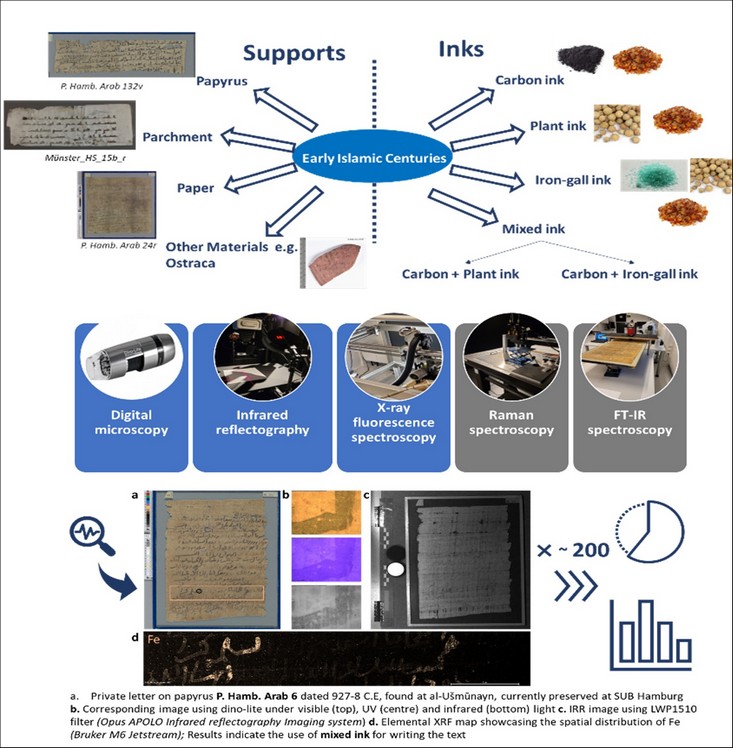The Scribe’s Choice
Writing Supports in Arabic Documents of the Early Islamic Centuries
2019–2025
RFK01

The first five centuries of Islam are very interesting for manuscript studies as they are characterised by a plurality of writing materials. Papyrus, parchment and paper – the latter from the middle of the 8th century – were used as writing supports.
Coexistence of different writing supports and inks sparks several questions: Were they used interchangeably? Was one material preferred over others for specific purposes? How quickly did paper substitute papyrus and parchment? How did scribes choose a writing support: for practical reasons such as price, availability and performance, or because of tradition and cultural norms? Did book forms and formats depend on the choice of a certain writing surface? Is there a connection between the ink type and a writing surface?
To address these questions, this project conducts codicological and material studies of a selection of two hundred Arabic documents from various areas of Egypt, dated between the seventh and eleventh century, using an array of analytical non-invasive or micro-destructive techniques. The material analysis is carried out both at the CSMC and on site at the different papyrological collections across Europe using the instruments from the mobile lab. These include Staats- und Universitätsbibliothek Hamburg, Österreichische Nationalbibliothek, Wein and Leiden University Library. The data acquired through these measurements is then evaluated to indicate potential correlations between the material properties of the fragments and their content and context of production.
The results are also compared with those obtained on fragments originating from other contexts (religious, for instance, see RFK07) and from cultures in Egypt and Central Asia during the same period. Furthermore, investigations in this project benefit greatly from cooperation with further experts from archaeometry, paper history, and papyrus conservation.
People
Project lead: Claudia Colini
Research Associate: Sowmeya Sathiyamani




